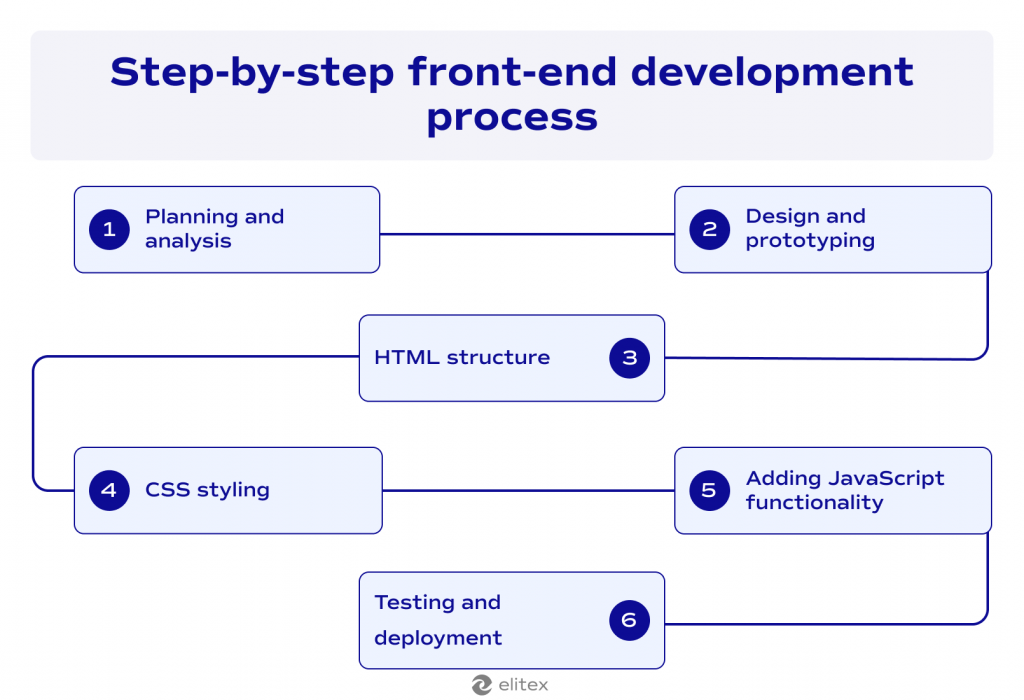Insightful Bytes
Exploring the world one byte at a time.
Front-End Flavors: Choosing the Right Tech Stack for Your Next Project
Unlock the secrets to choosing the perfect tech stack for your project! Explore the best front-end flavors and elevate your development game.
Exploring Popular Front-End Frameworks: Which One Fits Your Project?
When it comes to front-end development, several frameworks stand out due to their robust features and community support. Among the most popular are React, Angular, and Vue.js. React, developed by Facebook, excels in building interactive user interfaces, particularly single-page applications (SPAs). Its component-based architecture makes it easy to reuse code and manage the state effectively. On the other hand, Angular, maintained by Google, is a comprehensive framework that offers a complete solution for both front-end and back-end development. It is ideal for large-scale applications due to its powerful features, such as Dependency Injection and two-way data binding. Finally, Vue.js has gained popularity for its simplicity and ease of integration, making it a great choice for projects that require a quick setup.
Choosing the right framework depends largely on the specific requirements of your project. Here are some key considerations to help you decide:
- Project Size: For large-scale applications that need scalability, Angular might be the best fit.
- Learning Curve: If ease of use is your priority, Vue.js provides a gentle learning curve.
- Community Support: React boasts a vast ecosystem, which can be advantageous for finding resources and libraries.
Ultimately, evaluating the key features and your project requirements will guide you in selecting the right front-end framework.

The Ultimate Guide to Front-End Tech Stacks: Tools and Technologies You Need
When diving into the world of web development, choosing the right front-end tech stack can significantly influence the efficiency and quality of your projects. A tech stack refers to the combination of programming languages, frameworks, libraries, and tools used to create a web application. The most popular front-end technologies include HTML, CSS, and JavaScript. These foundational elements work together to create engaging and responsive user interfaces. Furthermore, modern frameworks like React, Vue.js, and Angular have emerged as essential tools that facilitate faster development and easier maintenance of applications.
In addition to these core technologies, it’s vital to consider other key components that complete your front-end tech stack. Tools such as Webpack for module bundling and Babel for JavaScript transpilation play crucial roles in optimizing your development workflow. Additionally, CSS preprocessors like Sass and front-end libraries like Bootstrap can significantly enhance your design process. To sum up, leveraging a well-rounded tech stack not only boosts your productivity but also enables you to create dynamic, user-friendly applications that stand out in a competitive market.
How to Evaluate and Choose the Best Front-End Tools for Your Development Team
When it comes to evaluating and choosing front-end tools for your development team, the first step is to clearly understand your project requirements. Consider factors such as team size, project complexity, and specific technology needs. This involves gathering input from team members about their preferences and experiences with various tools. A well-structured requirements analysis can help identify the necessary features that your team needs, which can include scalability, ease of integration, and community support. Moreover, conducting a comparison of available tools based on these criteria is essential in making an informed decision.
Once you have identified potential front-end tools, the next step is to conduct hands-on testing. Allow your team to trial multiple options in a sandbox environment to evaluate their functionalities and user interfaces. Additionally, consider their documentation and support, as good resources can significantly ease onboarding and troubleshooting. Gathering feedback from team members after testing these tools will also provide valuable insights. Ultimately, choosing the right front-end tools will enhance your team's productivity and streamline your development processes.